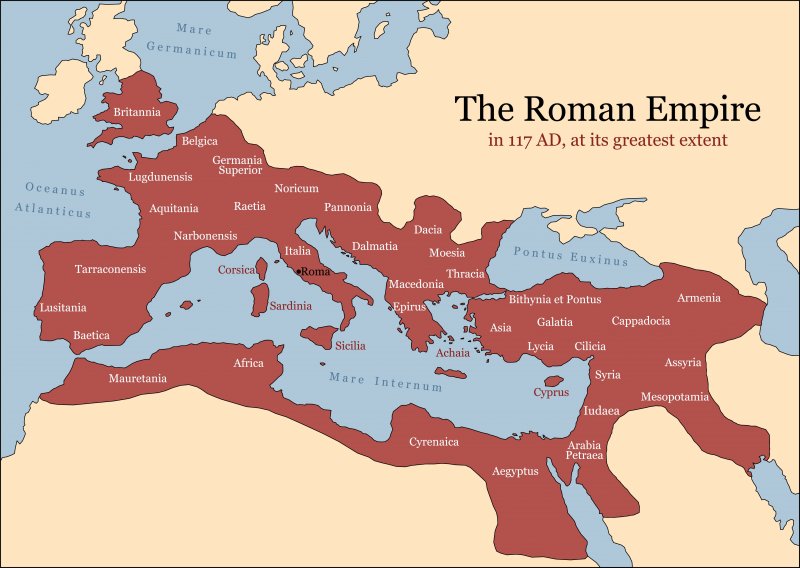The Byzantine Empire
John from Alpha Club has been studying the Roman Empire at school and he's written an essay covering some of what he has learned...

If you have ever learned about the Roman Empire at Primary School, you were probably told the empire fell in 476 AD. Well, that is only about 50% accurate. People living in Greece and Turkey will tell you that the Empire continued to exist there, as the Byzantine Empire.
We begin in the year 330 AD, when Constantine, an emperor from the Constantinian Dynasty, moved the capital city of the Roman Empire from Rome to Byzantium, renaming it Constantinople. As he was a Christian Ruler, he decided to convert the entire empire's religion to Christianity for the first time. When the Barbarians sacked the city of Rome in 410, Constantinople became the seat of the Roman Empire for the next 1000 years. Although historians call it the Byzantine Empire, the people living there at the time were still considered Romans and the empire was still called the Roman Empire.
The Eastern Empire (which we can now officially call the Byzantine Empire) kept its original borders for the first few decades, while many great non-related dynasties came into power, even though the line of succession can still be traced all the way back to Augustus. Things started to change in 527 AD when Justinian from the Justinian Dynasty came to power and reclaimed lost African territories which had previously been in the possession of the Western Roman Empire, southeastern territories in Iberia (modern day Portugal and Spain combined), and even performed the greatest miracle of taking back the city of Rome from the Ostrogoths as well as almost all of modern day Italy.
In 610, Emperor Heraclius converted the Empire's official language from Latin to Greek and even ordered the whole Hebrew Bible to be translated to this different language. Just a decade later in 624, the Visigoths stole the empire's holdings in Iberia which were never to be returned, and then the Islamic Caliphates got hold of all of Northern Africa as well as the Levant (modern day Israel and Palestine).
The empire then went into a dark age that lasted for 300 years, during which time multiple different emperors ruled and many different civil wars were fought. The Byzantine Emperors themselves followed Roman laws (including the law of the emperor being the only one allowed to wear purple), and wore Roman clothing and military uniforms.
Rome was under the control of the papacy, and Greece was under the control of the Bulgarians, leaving the empire with Anatolia (Modern day Turkey) and small southern Italian Enclaves. However, everything was resolved by the year 1018 as Emperor Basil II expanded influence in Italy once more and defeated the Bulgarian Empire. Influence reached as far north as Hungary, putting the Byzantine Empire in a situation of Military power it had not seen in 400 years. In the eyes of Greeks, Basil is considered a hero but in the eyes of the Bulgarians, he is considered a villain.
The year 1054 is known as the year of the great schism in which all churches in the Italian Realms holding on to Greek traditions were forced to convert to the Papacy or be permanently shut down. In 1071 emperor Romanos IV lost the battle of Manizert and all of Anatolia was won by the Turkish Seljuks. Furthermore in 1073, the final Italian holdings were lost, never to be returned again!
In 1096 a Byzantine Ruler called Alexios I came to power, giving us a parallel with English History. If you know about Richard I then you should know a bit about the First Crusade. Well, Alexios I took part in this, sort of. The first crusade involved recovering the Holy Land (Israel and Palestine) from Islamic control and Alexios I travelled to the papacy and asked the Pope for a small number of professional knights, although instead he was greeted by 1000s of European armies traveling through the Byzantine Empire to reach the Holy Land. Seeing this as an opportunity, he sent these armies to help him take back Anatolia from the Turkish Seljuks, although they did not get very far.
When Alexios I died in 1118, his son John II became emperor and straight away he continued to take back Anatolia by laying siege upon the region bit by bit. John got to the point where he managed to take hold of the coast of Anatolia on both northern and southern fronts once more. Unfortunately, the Empire never succeeded at repairing all the damage caused by Manikert because of the Fourth Crusade. The trouble began in 1195 when Isaac II was deposed by his brother Alexios III. Alexios IV, who was Isaac's son, found some Crusaders preparing to fight in Egypt and asked them to help restore his father to the throne in exchange for riches. Isaac was restored as emperor in 1203 but Alexios IV was unable to pay the crusaders as promised which angered them and caused them to vandalise Byzantine lands. Alexios III's son-in-law Alexios V was placed on the throne in 1204 to solve the issue but when negotiations failed and the Crusaders were already within the city, nothing could be done to prevent the Roman Empire from becoming a crusader state.
In 1261 a man called Michael Palaiologos was able to reclaim the throne and rebuild the entire city. When his son Andronikos II became emperor in 1282, he focused solely on the Bulgarian threat in the north but, he unknowingly opened the door for the Byzantine Empire's most famous enemy the Ottomans who quickly got hold of the empire's holdings in Anatolia, never to be returned. Andronikos was deposed by his own grandson in 1328. When the grandson died in 1341, the throne was inherited by Andronikos II's great grandson John V. He was consistently getting deposed which enabled all holdings to disappear until the Peloponnese Region and the land immediately surrounding Constantinople was all that was left. Emperor Manuel II was on good terms with the Ottomans but was unable to curb their expansion.
Manuel's son John VIII spent his time as Emperor trying to unite with the papacy but with the Great Schism and many other conflicts still in recent memory, no one supported him in that alliance. The throne was then passed to John's brother Constantine XI who went on to become the last ever Byzantine Emperor. In 1453, he died on the same day that Constantinople was conquered by the Ottomans,bringing an end to this 1100 year period of history.
